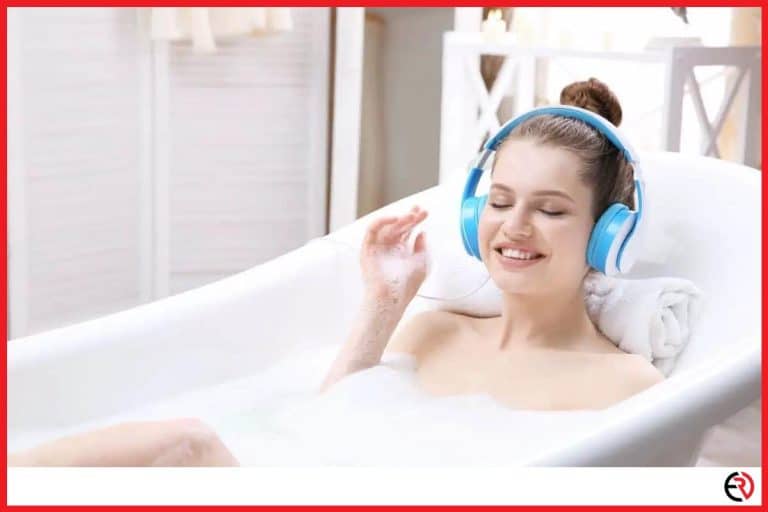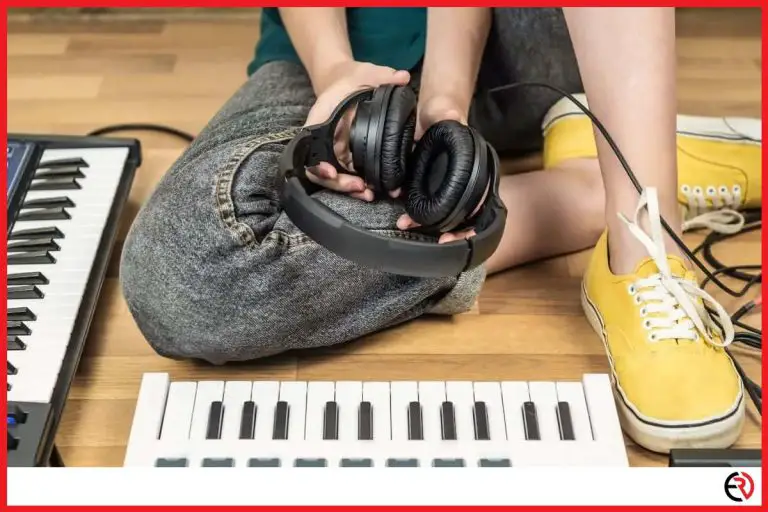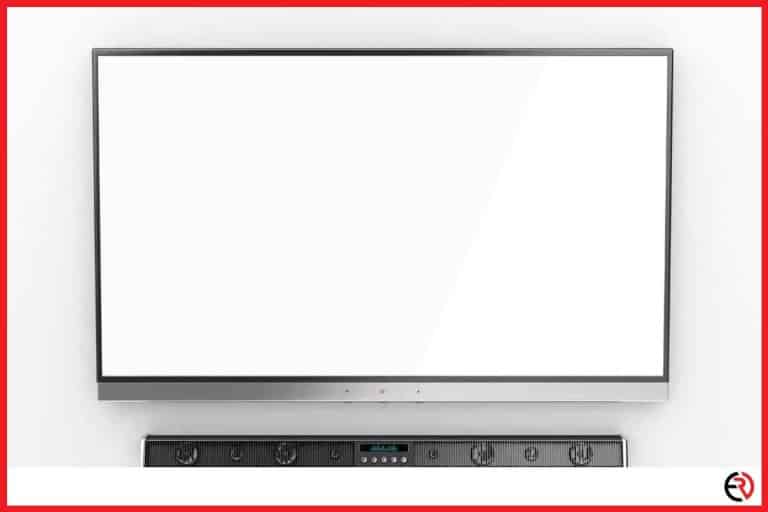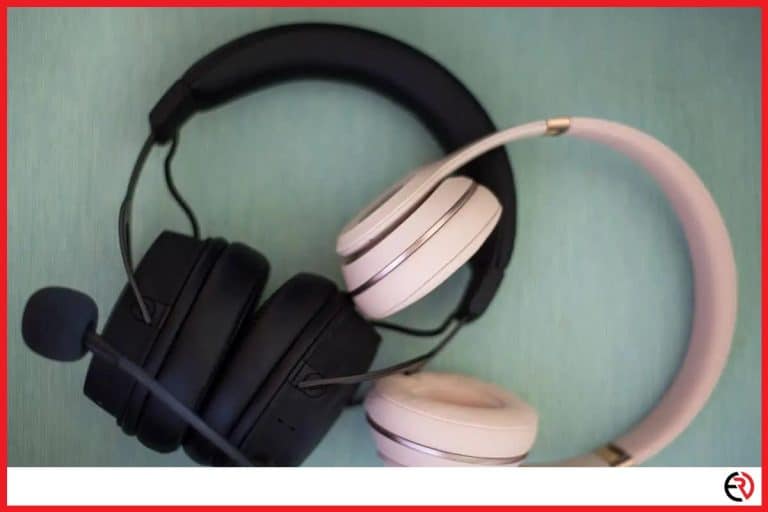Can You Connect Two Pairs of Headphones to Your TV?
This post may contain affiliate links which means that, if you choose to make a purchase, I may earn a small commission at no extra cost to you.
It’s a weekend night, the kids are asleep and I’m trying to watch a Netflix show with my partner. I can’t turn on the speakers since it’s going to wake up the kids. I couldn’t connect just one pair of headphones to the TV either. So we pulled our couch close to the TV and put the volume to barely audible levels. I had to solve this problem so that I don’t have to go through that ordeal once more.
Fortunately, you can connect two pairs of headphones to your TV. However, you need to get some additional hardware. You can either get a headphone jack splitter for wired headphones, or a Bluetooth transmitter for Bluetooth headphones.
Let’s check out how you can use such hardware to connect two pairs of headphones to your TV.
Connecting two wired headphones to the TV
If you have wired headphones, connecting to the TV is very easy. Most TVs have a line-out 3.5mm jack for speakers and headphones. All you need is a Two-way Headphone Jack Splitter. Plug it into the 3.5mm AUX port on your TV and connect two wired headphones on the other end. This allows you and one more person to listen to the TV in privacy at the same time. Moreover, these splitters are inexpensive.
Multi-Channel Amplifier
However, the headphone jack isn’t capable of delivering a lot of power. That’s why you may have a low volume on both headphones with this method. You can solve this issue by spending a bit more on a multi-channel headphone amplifier.
These amplifiers are very capable and usually draw DC power from the wall. You can use an AUX cable to connect the TV to the amplifier’s input. The rest of the 3.5mm TRS ports are for headphones and all of them would be adequately loud. Make sure to buy multi-channel amplifiers that use the 3.5mm port. Otherwise, you may need to spend more on multiple headphone jack adapters.
TV with no analog audio output
If your TV doesn’t have a 3.5mm audio out port and you need to rely on an optical or coaxial connection for wired audio, you can’t use the amplifier directly. In such cases, you need to add a Digital to Analog Converter (DAC) in your setup. You need to connect the TV’s optical or coaxial output to the DAC’s input and then connect the DAC’s 3.5mm headphone output to the multi-channel amplifier.
Check out this article for more information about the difference between a DAC and an Amp.
Connecting two Bluetooth headphones to the TV
With a wired setup you need to deal with a mess of cables. Apart from the optical, coaxial, and AUX cables, you also need to add multiple power adapters to the wall for the DAC and the amplifier. That’s why I prefer a wireless setup with Bluetooth headphones.
I have multiple pairs of Bluetooth headphones and a few truly wireless earbuds as well. Some TVs have the dual Bluetooth audio option and can connect to two Bluetooth headsets effortlessly. However, my TV didn’t have this capability. I’m assuming yours doesn’t either. Otherwise, you wouldn’t be reading this article. Fortunately, we can buy a Bluetooth transmitter for the TV.
A Bluetooth transmitter can connect to the TV and connect up to 2 pairs of Bluetooth headphones easily. Some models can connect to a higher number of headphones. However, those usually have latency issues and audio delays. When you buy a Bluetooth transmitter for your TV make sure to check the audio inputs are compatible with the audio outputs of your TV.
To connect multiple Bluetooth headphones to your TV:
- Connect the transmitter to a power source with the provided USB cable.
- Next, connect the transmitter to the TV using optical audio, AUX, or RCA cables.
- Slide the power switch to turn on the transmitter.
- Now turn on your Bluetooth headphones and put them in pairing mode. The first Bluetooth headphone will automatically pair with the transmitter. You’ll see one of the headphone logos and Bluetooth logos on the transmitter light up.
- Next, you need to put the second Bluetooth headphone in pairing mode and press the second headphone logo on the transmitter. When the headphone is connected the second headphone logo along with the Bluetooth icon will light up and stay that way.
- After you have completed this setup, go to the Sound settings on your TV and select Audio Output.
- If you have connected the TV and the transmitter via an optical cable, you need to change the output audio format to PCM. On the other hand, choose Headset output if you connected the TV and the transmitter with an AUX cable. For an RCA connection, you need to change the output from Internal speaker to External speaker.
- Depending on the make of your TV, these settings may vary. That’s why it’s best to look up the owner’s manual. If you have bought a TV within the last few years, the TV should be able to make this setting adjustment automatically.
For me, this is the most hassle-free setup since I don’t need to unplug and plug wires numerous times. When my partner and I need to use the headphones we simply need to turn on the transmitter and turn on our Bluetooth headphones.
When you buy a Bluetooth transmitter make sure to check the specifications. Always opt for Bluetooth 5.0 or a higher version. Bluetooth 5.0 has a longer range and higher bandwidth compared to previous Bluetooth versions. This helps with the audio quality. Moreover, you also need to check the Bluetooth audio codecs supported by the transmitter. Make sure it supports AAC and aptX codecs.
Conclusion
Nothing beats my home theater system when I watch movies. However, when the kids are asleep or I want to have more intimate moments with my partner, I just connect two pairs of headphones to the TV. There is an odd sense of comfort knowing you have the option to binge-watch a new series or rewatch your favorite TV series at night or any time you want without disturbing the precious sleep of your kids. I hope you can do the same after reading this article.








